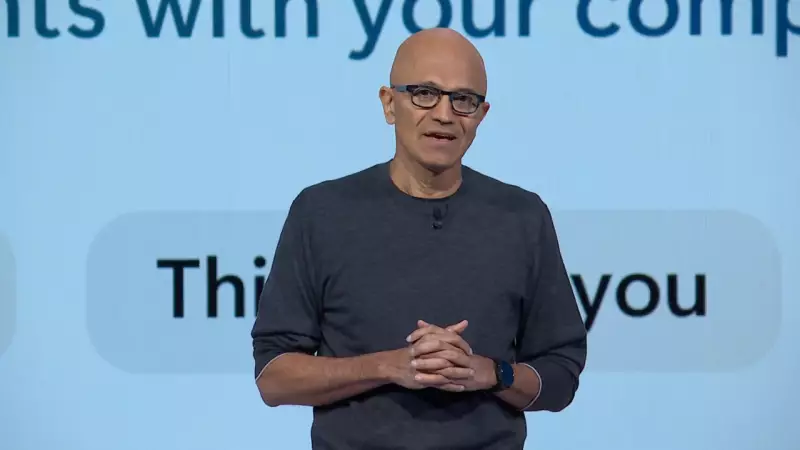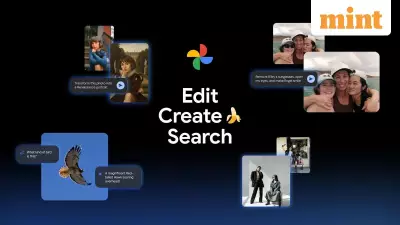
Microsoft's Revolutionary Pricing Shift: From Human Users to AI Agents
In a groundbreaking announcement that signals the future of enterprise software, Microsoft CEO Satya Nadella has revealed the company is fundamentally transforming its pricing strategy. The software giant is moving away from traditional per-user charging models to embrace a new per-agent pricing structure as artificial intelligence systems increasingly perform autonomous work alongside human employees.
Speaking candidly on the popular Dwarkesh Podcast, Nadella explained that Microsoft's entire business orientation is shifting from being an end-user tools company to becoming an infrastructure provider supporting AI agents that can complete tasks and make decisions independently.
The Infrastructure Transformation
Nadella articulated the core transformation clearly: Our business, which today is an end-user tools business, will become essentially an infrastructure business in support of agents doing work. This represents one of the most significant strategic pivots in Microsoft's history, reflecting how deeply AI is reshaping the technology landscape.
The Microsoft CEO emphasized that the company's existing services, including the massively successful Microsoft 365 suite that already generates $100 billion in annual revenue, will serve as the foundational workspace for these AI agents. All the underlying infrastructure Microsoft has built over decades remains critically relevant in this new paradigm.
You need some place to store it, some place to do archival, some place to do discovery, some place to manage all of these activities, even if you're an AI agent, Nadella noted, highlighting how Microsoft's existing capabilities position it perfectly for this transition.
Practical Implementation and Growth Projections
Microsoft has already taken concrete steps toward implementing this new pricing model. Earlier this year, the company introduced a pay-as-you-go pricing model for its AI agents. This metered system operates alongside the free Copilot chat experience for Microsoft 365 users, enabling companies to pay based on the actual work their AI agents perform.
Nadella projected significant growth from this new approach, suggesting that this infrastructure business would grow faster than the number of users. This reflects the reality that while human user numbers might plateau, the number of AI agents working alongside them could multiply exponentially.
The Microsoft CEO provided a compelling vision of how to think about this shift: The way to think about the per-user business is not just per user, it's per agent. If you sort of say it's per user and per agent, the key is what's the stuff to provision for every agent - a computer, a set of security things around it, an identity around it.
Real-World AI Integration Examples
Nadella offered concrete examples of how AI agents are being integrated into Microsoft's core products. He discussed the Excel Agent, which represents a fundamental rethinking of how AI interacts with software. Rather than being a simple UI-level wrapper, Microsoft is embedding AI capabilities directly into the core middle tier of the Office system.
Excel Agent is not a UI-level wrapper in this case because we have all the IPs from the GPT family. We are taking that and putting it into the core middle tier of the office system, Nadella explained. This approach enables the AI to understand not just surface-level interactions but the underlying logic and structure of complex documents.
Nadella framed this integration in practical terms: Don't worry about the Excel integration. After all Excel was built as a tool for analyst. So whoever is this AI, that is an analyst. I'm building an analyst as essentially an AI agent, which happens to come with an a priori knowledge of how to use all of these analytical tools.
Industry-Wide Transformation
Microsoft's pricing shift reflects a broader industry transformation as companies across the technology sector reconsider how to charge customers in the age of agentic AI systems. Other major players are adopting similar usage-based models.
Anthropic, for instance, bills customers based on usage for their Claude models, charging per million tokens processed. Google employs a comparable pay-as-you-go approach for its Gemini API. This industry-wide movement signals a fundamental rethinking of value measurement in the AI era.
Nadella emphasized the importance of competition and choice in this evolving landscape: So even for the model companies, they're allowed to compete, right? So if their price stuff high, guess what if I'm a builder of a tool like this? I'll substitute you. And so as long as there's competition where there's multiple models and there's an open source check, there is enough room here to go build value on top of models.
The Future of Work and Computing
This transition represents more than just a pricing change—it signals a redefinition of what constitutes work and how value is created in the digital economy. As AI agents become capable of performing complex tasks independently, the very nature of software usage transforms.
Nadella's vision positions Microsoft at the center of this transformation, providing the essential infrastructure that enables both human workers and AI agents to collaborate effectively. The company's massive existing customer base and comprehensive suite of productivity tools give it a significant advantage in this new paradigm.
The shift to per-agent pricing acknowledges that in the future, the number of intelligent agents performing work could far exceed the number of human users, creating new growth opportunities and fundamentally changing how businesses allocate their technology budgets.





